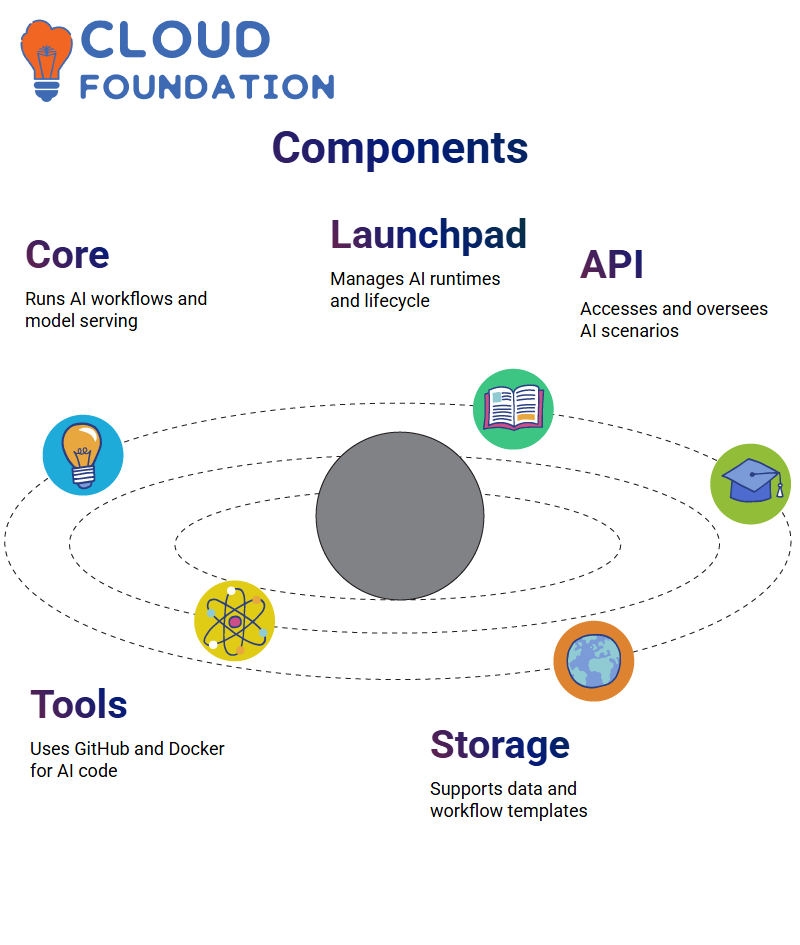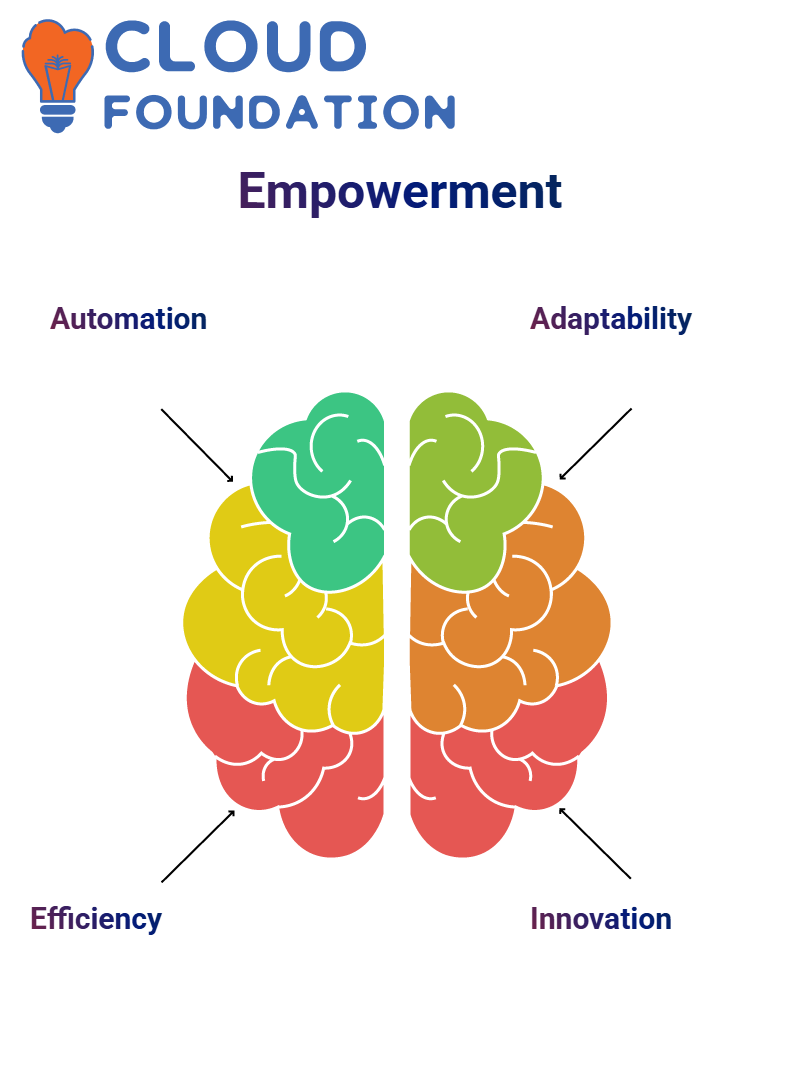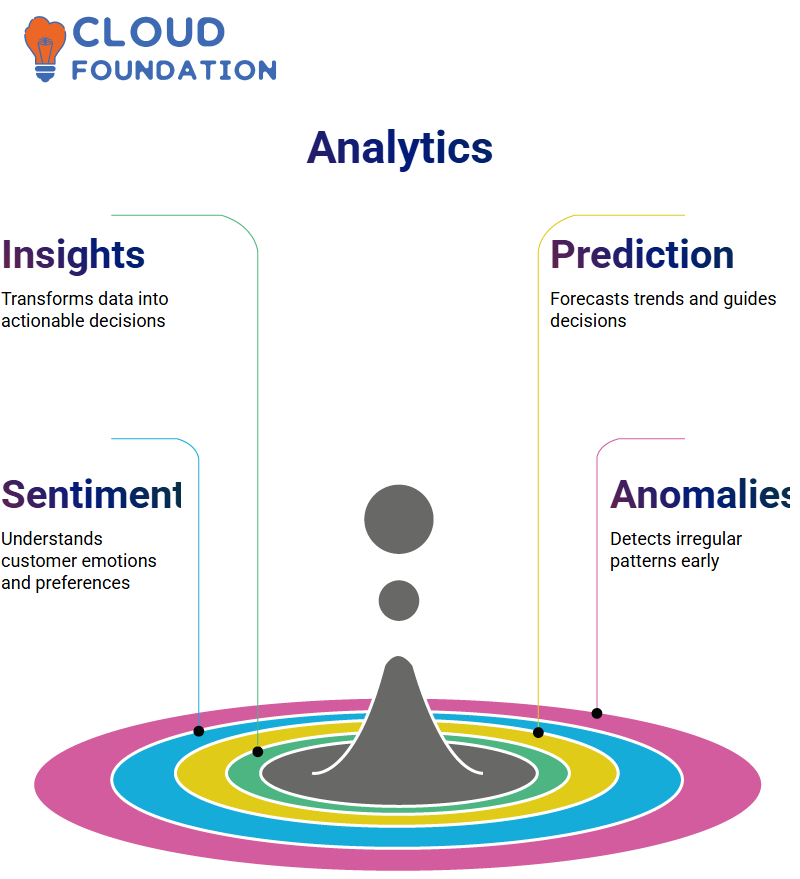What is SAP AI?
Introduction to SAP AI
SAP AI Core provides an overview of the architecture for this feature, as well as the scope of available resources, intelligent decision-making capabilities, and landscapes for informed decision-making in the cloud.
Before I discuss how SAP AI Core and Launchpad interact, I would like to provide a brief introduction to them.
Before I do that, though, let me provide you with an introduction to SAP AI Core. SAP AI Core is a service in SAP Business Technology Platform intended to manage the execution and operation of AI assets on an industry-agnostic basis with standardisation, scaling, and hyper-scaling capabilities.
Integrate effortlessly into our SAP solutions, as any AI function can be easily created using open-source frameworks.

SAP AI Code Overview
SAP AI code offers comprehensive lifecycle management of AI code scenarios. Here on screen, we see the process flow between SAP AI code and its launchpad, thus revealing three major components within it.
There’s the SAP AI API and launchpad; then comes the API connector; finally, there’s SAP AI core at its heart.
Here we see an SAP AI launchpad being connected with different personas. Now, let us examine other components of the SAP AI core.
Key Components of SAP AI Core
The AI core is essential for seamlessly and efficiently incorporating artificial intelligence capabilities into our SAP solutions. SAP AI Core enables us to do just that, with applications such as GitHub, Docker, and data storage systems.
Utilise large volumes of data from various applications to construct robust AI learning models.
It provides AI training on accelerated hardware with low latency and high throughput at cost-efficient rates.
As previously discussed, SAP AI Core, Launchpad and API will serve as our focal points in AI implementations. These three areas comprise its complete AI lifecycle solution.
I repeat, the first one happens to be the SAP AI Core, the second happens to be the SAP AI Launchpad that we see in the dark blue colour, and then we have the AI API.
These three components make up SAP AI Core; its engine allows us to run AI workflows and model serving workflows, while SAP AI Launchpad manages various AI runtimes.
An AI API facilitates the access and management of AI scenarios for various user groups. An API also serves as a standard way to oversee the AI code lifecycle, regardless of whether it’s supplied via SAP technology, such as S/4HANA, or partner solutions, such as Amazon Web Services (AWS).
Therefore, when the AI API is deployed outside the S4 SAP AI core environment, except for development use cases, its runtime adapter must provide support.
We utilise SAP AI code, which includes AI API central tenant tenants, resource groups and the data stage as its support mechanism.
Here, GitHub and Docker serve as our primary tools in writing SAP AI code.

SAP AI Architecture
Here we see an SAP AI architecture wherein data storage plays a prominent role.
And finally, we have core systems. Let us look back at my previous slide, where I discussed SAP AI Core – you will notice an AI API there. Similarly, we also provide an AI API connector here.
The AI API is connected to the SAP AI Core Connector, which, in turn, connects to the Operation Manager.
Docker registry and data storage that has become associated with SAP AI core, complete AI code. We then have workflows and workflow templates attached, followed by the SAP AI API for users to utilise when working with it.
Finally, users interact with various repositories and objects when working with this core of AI technology.
SAP AI Object Codes
Therefore, SAP assigns object codes; customers also provide components with this capability to enhance control, authorisations, and continuous integration and deployment processes.
So if you come across the Git repository, let’s have a closer look. This repository serves to store training and serving workflows as well as templates.
Here, we have what is known as hyper-scaler object storage, which we utilise for storing input and output artefacts, such as training data or models.
Access is provided through services like the CPBDP object store service, as an example, and the Docker Registry, which serves as another resource for accessing them all.
Docker registry acts as a clearinghouse, collecting image references. We then have a Docker repository, which is dedicated to holding Docker images within this registry.
Kubernetes can also help us. Kubernetes is explicitly designed to manage clusters or groups of data used in AI pipelines.
SAP AI Launchpad
The AI API serves to manage artefacts and workflows across different runtimes, including training scripts, data models, and model servers, among others. We also offer the SAP AI Launchpad for managing artefacts and workflows more directly.
SAP AI Launchpad serves as a multi-tenant Software-as-a-Service (SAAS).
Its customers and partners can utilise it through the SAP Business Transaction Platform’s SAS app to effectively manage AI use cases across various instances of AI runtimes, such as ACPI code.
Research can cover an expansive scope, so I will attempt to narrow it down here and highlight key aspects within our resources.
At Resource Group Services, we categorise tenant-level resources as tenant resources and resource group-level resources. Additionally, there are various resource types, depending on which tenant they apply to.
It has also been divided up further to separate SAP services as being “I visit them and pay”, while still offering similar services as IAP does.
Your first question pertains to Tenant A, including its workflows and serving template configuration. Furthermore, as previously discussed, Docker images make up part of our repository.
Identity provider features default resource groups, including execution and development keys. Additionally, there is an object store that hosts intelligence decision dimensions.
SAP AI Capabilities
AI and SAP AI offer various possibilities that we need to consider in our daily activities, while on the right, we see their software solutions provided by SAP.
Integration encompasses a range of activities, including communicating on various social networking sites, managing chats using hybrid tools, utilising chat tools with diverse functions, and even granting access to OpenAI.
OpenAI, SAP, and identity management services can all be connected within an intelligent decision-making framework. Furthermore, cloud server hyper-scalers, as well as integration of various tools or software programs, may all be possible within its scope of action.
Here, we see intelligent decision-making within a cloud landscape through this SAP beta tool.
SAP FES features the Live Pool Add-On, which enables seamless live data collection from external systems and processing to inform decisions during ranking processes.
We have access to a BTP Platform where we can view conversational AI generated through content, as well as a webhook-based URL.

Hyper-scaler cloud in SAP AI
Here, we find the hyper-scaler cloud, which is part of all major cloud platforms, including Google Cloud Platform (GCP), Amazon Web Services (AWS), Microsoft Azure, and Yandex Cloud.
There are other clouds from which we can access this Skype buffer using the IDD connector. Once connected, data validation takes place here.
We produce data in various hybrid formats that make it accessible on the BTP platform, providing access to these information assets.
Process Data: We can also process the data. There are various input methods we can employ; here is an end-user attempting to connect to our system. Client Data Connect, Data Centre located on the left, and Resource Group Mapping are just two examples.
Upon examining the resource group mapping closely, it becomes apparent that tenants provide this service.
Each service provider tenant will have its default option, followed by one, two, and so forth, providing us with multiple ways to reach effective outcomes.
SAP AI Business Empowerment
SAP Business AI’s seamless combination of generative AI and workflow automation offers businesses an intuitive user experience, helping them reach their goals more quickly while staying ahead of the competition.
Here we can see how AI is revolutionising businesses. SAP Business AI enables enterprises to enhance decision-making, operational efficiency, and competitiveness, ultimately driving greater business success.
Companies that utilise AI-powered insights and automation are well-suited to quickly adapt to market changes and customer requirements, thereby spurring growth and innovation through flexible business processes.

By harnessing AI capabilities, enterprises are unlocking fresh opportunities, streamlining operations and maintaining their competitive edge in today’s volatile marketplace.
SAP Business AI’s transformative impact goes far beyond efficiency – inspiring an ongoing culture of improvement while contributing toward strategic foresight.
AI technologies help businesses optimise resource allocation, mitigate risks and take advantage of emerging trends; ultimately ensuring relevance and success within an ever-evolving business landscape.
SAP AI Workflow Automation
Now we can explore the integration and functionality of artificial intelligence (AI) in business. SAP Business AI stands out for its seamless incorporation of AI across various business domains, enabling seamless operations by automating tasks and workflows, and increasing efficiency – ultimately propelling organisations ahead in the competitive landscape.
Integration across key functions, such as finance, procurement, and sales, provides insightful recommendations that enable informed decision-making and prompt informed action.
Implementing SAP Business AI helps businesses optimise processes, enhance customer experiences and meet strategic objectives with precision.
Its transformative abilities help companies to manage operations more effectively while opening doors to agile strategies for future success.
SAP Business AI enables enterprises to unlock the full potential of AI, driving growth and innovation across their operations.
SAP AI Customer Personalisation
Now we can observe the applications and advantages of SAP Business AI. Let’s begin with its applications.
SAP Business AI finds applications across many business functions, creating efficiency and innovation by automating tasks so employees can focus more effectively on strategic activities and decision making.
SAP Business AI also facilitates personalised customer experiences, using data and insights to tailor interactions and recommendations specifically for individual customers.
SAP Business AI equips IT teams with artificial intelligence capabilities, providing them with the tools they need to streamline processes and drive digital transformation.
SAP Business AI helps streamline finance and HR operations, optimise sales and marketing initiatives and leverage predictive analytics for trend and opportunity detection.
SAP Business AI increases security and efficiency throughout your organisation by helping prevent breaches while streamlining procurement procedures.
SAP AI Resource Optimisation
Next, we will explore the numerous and far-reaching benefits of implementing SAP Business AI.
These benefits can have lasting and life-changing consequences; they make implementation all the more attractive.
First and foremost, automation enhances efficiency and productivity by automating repetitive tasks and optimising processes – leading to reduced labour costs and better resource allocation.
SAP Business AI facilitates decision-making by providing real-time insights and predictive analytics, enabling organisations to make data-driven decisions quickly.
SAP Business AI also enhances competitiveness and market positioning by enabling organisations to adapt quickly to shifting market dynamics and customer preferences, minimising errors and optimising resource allocation to ensure organisations operate at peak efficiency.
Enhance data quality and cybersecurity, safeguarding sensitive information while ensuring regulatory compliance.
SAP Business AI encourages innovation and creativity within businesses to exploit new opportunities and secure a competitive edge within their markets.
In subsequent posts, we will further examine its effects within industries.

SAP AI Real-Time Insights
Let us first explore the significance of AI in modern business. In today’s business landscape, the integration of AI is viewed as a key factor in achieving success.
SAP Business AI serves as the backbone for organisations by offering real-time insights and process automation that enable informed decision-making and operational streamlining.
With predictive analytics, businesses gain the ability to anticipate trends and capitalise on opportunities, thereby maintaining their competitive edge.
SAP Business AI extends this influence across supply chain management, inventory control and production optimisation processes to reduce errors while increasing efficiency.
AI’s presence at the forefront of cooperative agendas exemplifies its transformative potential and compels organisations to explore solutions with SAP.
Companies utilising SAP’s powerful capabilities embark on an unprecedented journey of growth and innovation across multiple operational domains, driven by AI insights and strategies.
SAP AI analytics
SAP Business AI represents a significant leap forward in business data analytics. By seamlessly incorporating AI algorithms, this solution opens the way to real-time insight essential for demand decision-making.
AI can enhance analytics capabilities by uncovering unique patterns, recognising emerging trends, and helping make informed data decisions.
Businesses using this solution need to leverage all the potential in their data assets by turning raw information into actionable insights that drive success forward.
With SAP Business AI, organisations can navigate the complexities of modern business environments more seamlessly and agilely – staying competitive in today’s fast-moving marketplace landscape.

SAP AI Predictive Analytics
Here we see an example of AI-powered analytics within the SAP platform. The SAP platform offers various AI-powered analytical capabilities that significantly transform how businesses operate.
Predictive analytics enables organisations to predict future trends and take proactive decisions based on data insights.
In contrast, prospective analytics goes a step further by offering recommendations and guidance based on these insights.
Sentiment analysis helps businesses better comprehend customer emotions and preferences, leading to personalised experiences and enhanced customer satisfaction. Anomaly detection identifies any irregular patterns or deviations from the norm, enabling organisations to detect potential issues sooner.
SAP Business AI empowers businesses to unlock the full potential of their data, achieve improved results, automate repetitive tasks and processes more easily, and streamline operations within their SAP ecosystem by leveraging cutting-edge AI technologies, including machine learning and robotic process automation (RPA).
Automation frees employees from repetitive, time-consuming tasks, allowing them to dedicate themselves more effectively to strategic endeavours or value-adding work. This automation, in turn, enhances productivity, efficiency, and cost-effectiveness throughout an organisation.
SAP Business AI streamlines operations while minimising manual intervention, giving teams more power for growth and achievement within an organisation.
Through its integration with SAP systems, this app facilitates a smoother workflow and quicker decision-making processes, ultimately contributing to an agile and competitive business environment.
With SAP Business AI, businesses can achieve unprecedented levels of efficiency, effectiveness, and innovation – positioning themselves for lasting success in today’s dynamic marketplace.
SAP AI Process Streamlining
Here, AI will enhance workflow in SAP ecosystems. SAP Business AI revolutionises operations within this ecosystem through harnessing automation through AI technology.
Integration seamlessly integrates into complex business environments, streamlining workflows across multiple systems while significantly decreasing process times to realise cost savings while improving accuracy and scale effortlessly.
SAP Business AI plays an essential role in navigating an intricate business ecosystem where many systems and processes come together. By streamlining integration efforts within the SAP ecosystem, this innovation makes seamless operation a reality.
Businesses using SAP Business AI can swiftly adapt to market dynamics, increase customer satisfaction levels and strengthen operational capacities through optimised workflows. Furthermore, SAP Business AI maximises efficiency, agility and excellence for modern enterprise management.
SAP AI Supply Chain
Let us now delve deeper into supply chain optimisation with Business AI. SAP Business AI revolutionises supply chain management by harnessing AI capabilities to enhance various elements of supply chains.
SAP Business AI’s inventory management solution enables accurate demand forecasting, maintaining optimal stock levels while avoiding stockouts or overstocking situations.
AI-enhanced logistics optimisation simplifies transportation and distribution processes, cutting costs while improving delivery times by up to half.
Furthermore, SAP Business AI provides an all-inclusive supply chain solution designed to increase efficiency from procurement through fulfilment.
By leveraging AI for supply chain management, businesses can gain real-time visibility, make informed decisions through data-driven analysis, and quickly adapt to changing market conditions, ultimately achieving a competitive edge and customer satisfaction.
AI and machine learning capabilities will soon become seamlessly integrated within SAP applications, providing organisations with seamless access to these technologies.
Business intelligence will continue to gain mainstream adoption, enabling businesses to leverage predictive analytics and make data-driven decisions.
SAP Business AI’s primary aim will be to enhance user experiences through AI technology, providing personalised suggestions and an intuitive interface.
Advancements in AI algorithms will enhance the accuracy and efficiency of SAP Business AI, enabling companies to address complex challenges more easily and discover previously untapped opportunities.
AI will also play a central role in SAP application management by automating processes and optimising performance.
As AI usage expands, frameworks will be implemented to promote responsible AI use, including measures to mitigate any biases that arise and ensure a fair decision-making process with AI-powered tools.

Navya Chandrika
Author



